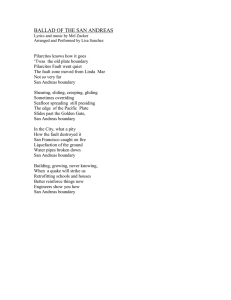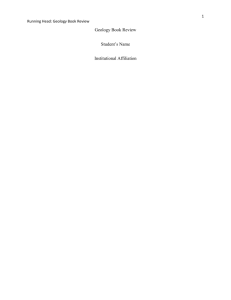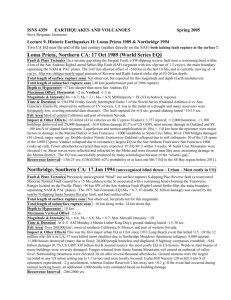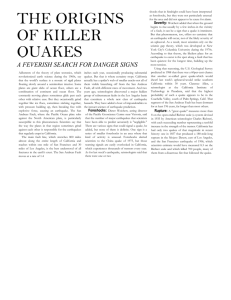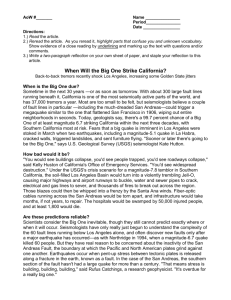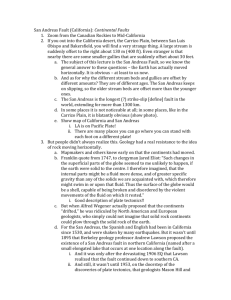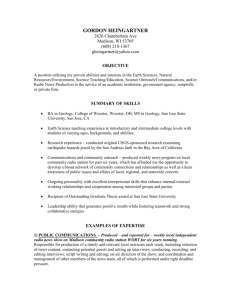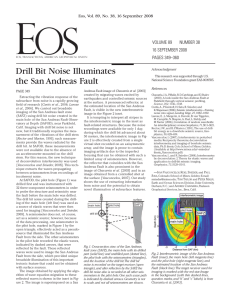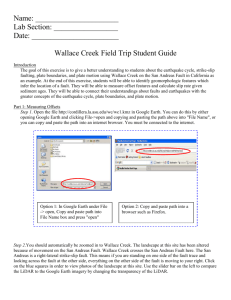Reading List 4
advertisement
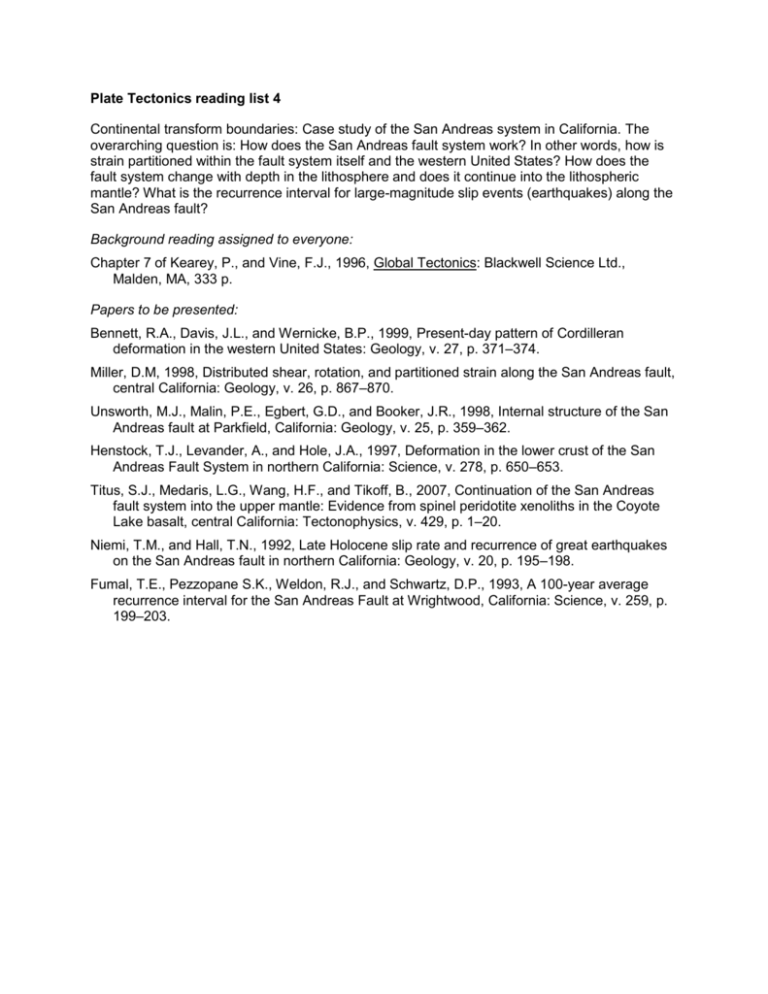
Plate Tectonics reading list 4 Continental transform boundaries: Case study of the San Andreas system in California. The overarching question is: How does the San Andreas fault system work? In other words, how is strain partitioned within the fault system itself and the western United States? How does the fault system change with depth in the lithosphere and does it continue into the lithospheric mantle? What is the recurrence interval for large-magnitude slip events (earthquakes) along the San Andreas fault? Background reading assigned to everyone: Chapter 7 of Kearey, P., and Vine, F.J., 1996, Global Tectonics: Blackwell Science Ltd., Malden, MA, 333 p. Papers to be presented: Bennett, R.A., Davis, J.L., and Wernicke, B.P., 1999, Present-day pattern of Cordilleran deformation in the western United States: Geology, v. 27, p. 371–374. Miller, D.M, 1998, Distributed shear, rotation, and partitioned strain along the San Andreas fault, central California: Geology, v. 26, p. 867–870. Unsworth, M.J., Malin, P.E., Egbert, G.D., and Booker, J.R., 1998, Internal structure of the San Andreas fault at Parkfield, California: Geology, v. 25, p. 359–362. Henstock, T.J., Levander, A., and Hole, J.A., 1997, Deformation in the lower crust of the San Andreas Fault System in northern California: Science, v. 278, p. 650–653. Titus, S.J., Medaris, L.G., Wang, H.F., and Tikoff, B., 2007, Continuation of the San Andreas fault system into the upper mantle: Evidence from spinel peridotite xenoliths in the Coyote Lake basalt, central California: Tectonophysics, v. 429, p. 1–20. Niemi, T.M., and Hall, T.N., 1992, Late Holocene slip rate and recurrence of great earthquakes on the San Andreas fault in northern California: Geology, v. 20, p. 195–198. Fumal, T.E., Pezzopane S.K., Weldon, R.J., and Schwartz, D.P., 1993, A 100-year average recurrence interval for the San Andreas Fault at Wrightwood, California: Science, v. 259, p. 199–203.
